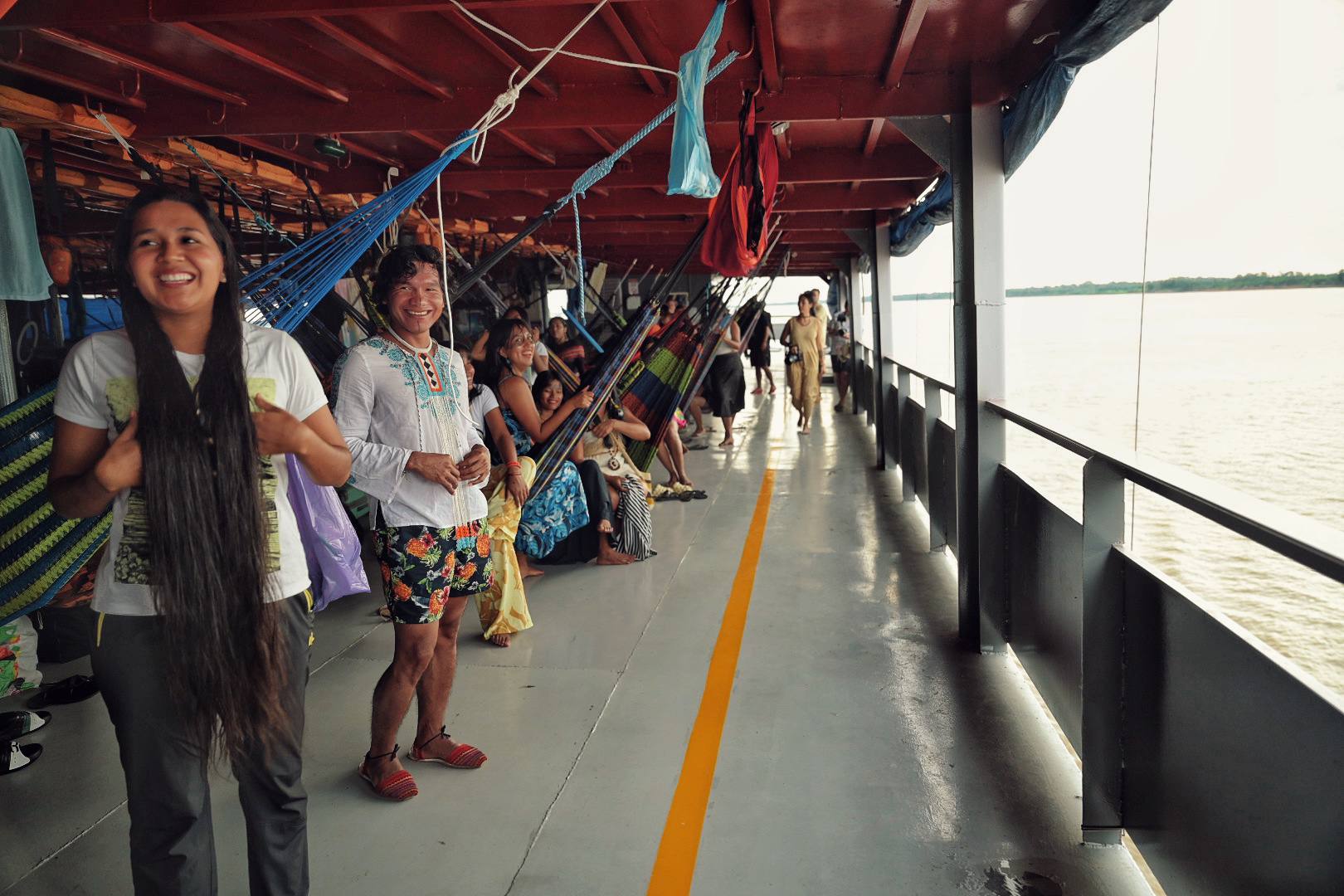
Indigenous Fleet Heads to Manaus, Carrying Voices and Demands for Environmental Justice to COP30
A new chapter in the logbook of the Yaku Mama Caravan as it draws closer to Brazil.
by Lucía Ixchiú
The night ended in a celebration of resistance and dance — a toast to our dead: leaders, defenders, scholars, artists, and Indigenous communicators who were murdered for protecting the land, the river, and the water. We turn celebration into a right, and through dignity, we name them.
We departed from Iquitos after the floating cinema on Bonita Island, at Muyuna Beach. We left behind the largest city in the world accessible only by the Amazon River or by air — a territory where plans for a mega-highway threaten the region’s entire biodiversity. Amid this chaos, ancient peoples continue to resist, navigating contradictions and imposed violence.
As the boat set off and we entered the river, many emotions surfaced. I thought of my family, my home — the same home I cannot return to now, due to violence and the criminalization carried out by the States. There are those who dislike my work, though it is born solely from the desire for justice and a dignified life.
This journey has also been a reunion with myself, and with the many ways of reconnecting with the territory — in this case, with the Amazon River, which we have been navigating for several days.
We arrived in Leticia, at the tri-border area with Colombia, to chart our course to Tabatinga and prepare for the final stage of our journey toward Manaus. Under the scorching midday sun, we climbed aboard with luggage, equipment, and over sixty souls committed to this crossing. People awaited us there, ready to welcome us and guide us to the house that would become our shelter for the next few days.
The following day, a festival of Indigenous foods greeted us, celebrating the diversity of the peoples who inhabit this meeting ground of resistance.
OPIAC, the National Organization of Indigenous Peoples of the Colombian Amazon, offered us a powerful lesson on how to build, from the grassroots, a collective process of defending territory and autonomy — weaving together perspectives and dialogues across different spheres.
The tri-border region is a fascinating and, at the same time, bewildering place — diverse, nonlinear, and profoundly contradictory. It is a territory where, amid dispossession, life insists on being reborn. A single street separates what was once one body, now fragmented by the borders of nation-states, where the trafficking of flora, fauna, and people continues.
We visited a park in Leticia, where birds sing as the sun goes down. Amid the variety of foods, flavors, and scents, the jungle wrapped us in its cloak of dreams, connecting us to a deeper layer of being.
For my people, dreams are part of existence. And on this journey, upon reaching the tri-border, I began to receive messages through them. An elder grandmother came to visit me in a dream — and in that encounter, I found my home. Sleep itself became a path within this crossing.
The next day, we sailed toward the border with Peru, where we were received by the community of San Juan del Barranco with songs and dances of the Tikuna people. The izangos also danced upon our bodies.
Amid the forest, we sang and danced to the rhythm of Amazonian cumbia. Exhausted after a football match with the community — where Yakumama gave its all but was ultimately defeated — we returned to the river, sailing back home.
At dawn, we began our preparations to set sail toward Manaus.
